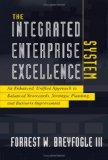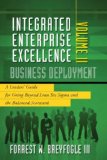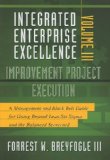Diagnosing Business Problems and Fixing Them in the Most Efficient Way Possible

While this sounds like obvious advice, it’s surprisingly difficult for businesses to optimize their problem-solving process. So to help you out, we’ve prepared this post to help you diagnose issues and fix them in the most efficient way you can.
Identifying the business problem
First, make sure you invest time into identifying the business problems that are affecting your business. This sounds easy, but the reality is that most people are only looking at the symptoms of the problem and the problem itself. For example, people might look at falling profits as the problem itself. But what exactly is causing that problem? Is it because there are competitors who are rising above you? Is it your business model that is outdated? Or is your team to blame for your business’s shortcomings?
In reality, it’s usually a combination of these factors that affects your profits. Sadly, there’s no way to easily identify the problem and solve it. Instead, what you’ll need to do is make use of feedback from employees and look at actionable sets of data to help you make informed decisions. This involves a bit of setup as you need to establish processes that actually record this kind of data. For example, if you believe that your business model is to blame, then you’ll need to pull up statistics that relate to your business processes. This can include sales numbers, your ROI on advertising and promotions, and click-through rates.
Applying the right solution to the problem
In most cases, business problems will have multiple solutions. For example, a broad problem such as falling sales can be fixed in many different ways depending on the root cause. It could involve focusing on customer service, expanding your range of products, or even just advertising more.
Applying the right solution can be tricky because there are many different ways to fix something, hence why it’s important to work with experts such as Jim Thomas of Atlanta. The benefit of hiring a specialist is that they can see your business from an outside perspective. They have a better view of everything because they’re looking from the outside in, and you get a better idea of what you need to do because they can look at your business objectively.
Finding the right solution is tricky, but with the right assistance, you can make it simple and painless. It’s better than trying many different solutions and ultimately failing because you’re inexperienced or unsure of what the root cause of the problem is. Diagnosing and fixing business problems doesn’t need to be difficult, but it does require a bit of investigation and investment.





 Schooley Mitchell
Schooley Mitchell



 Forrest W. Breyfogle III, author of
Forrest W. Breyfogle III, author of